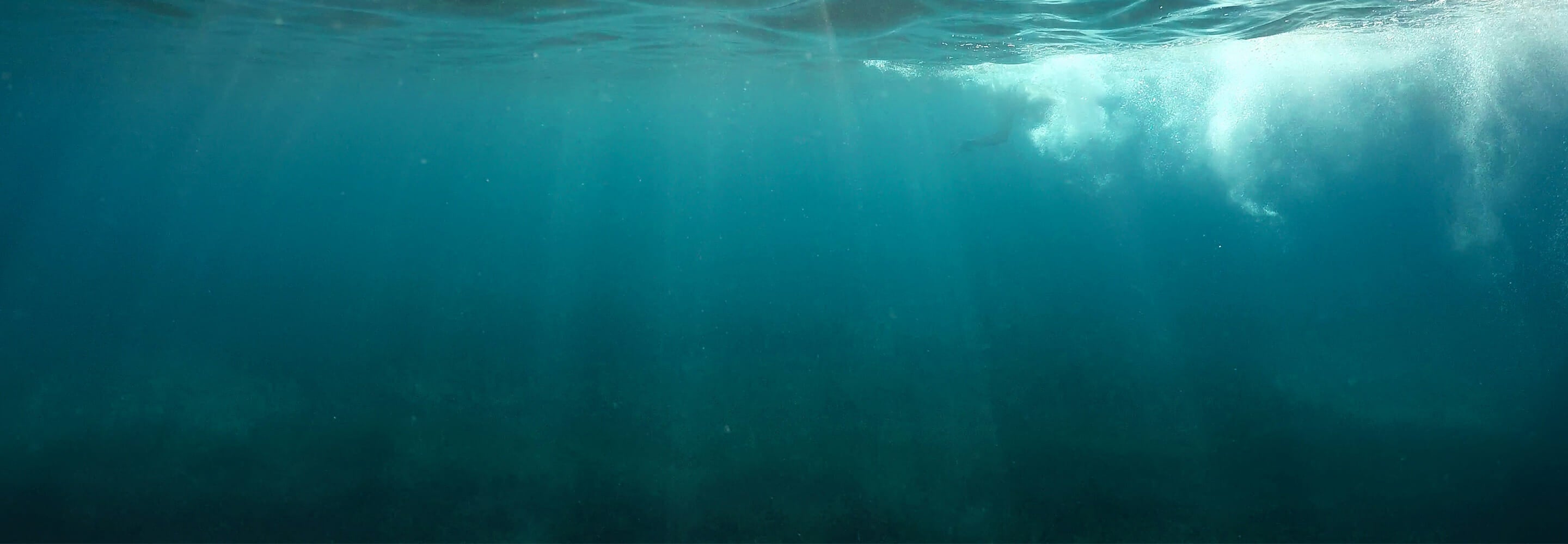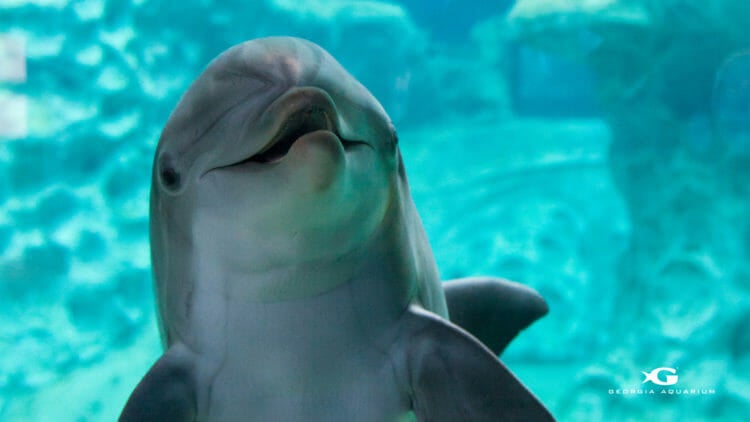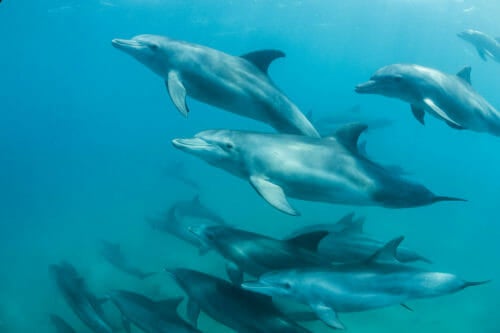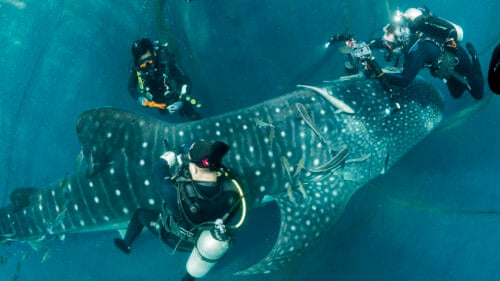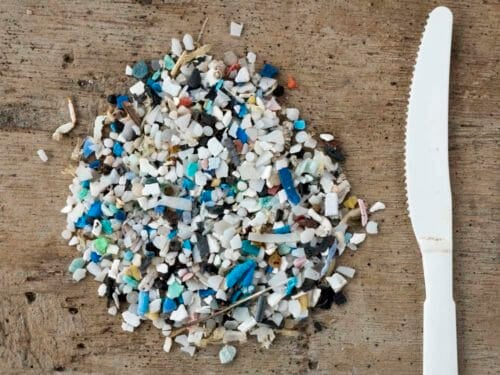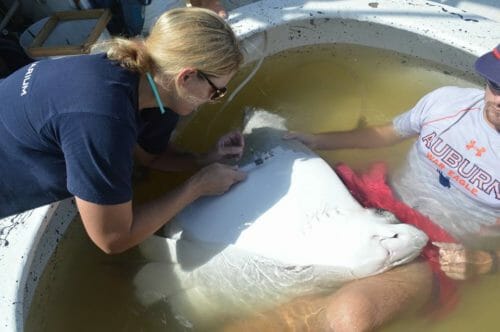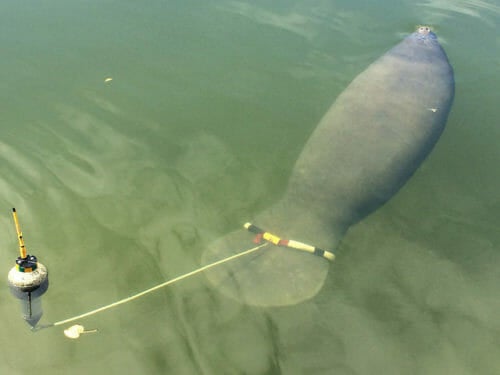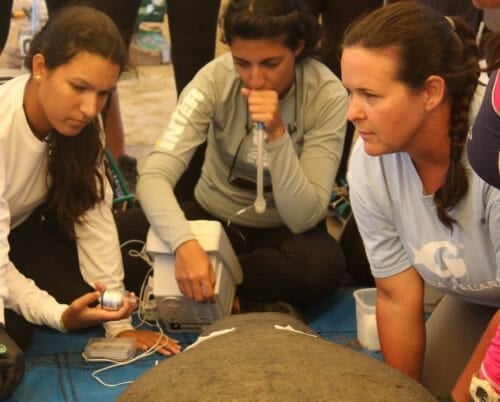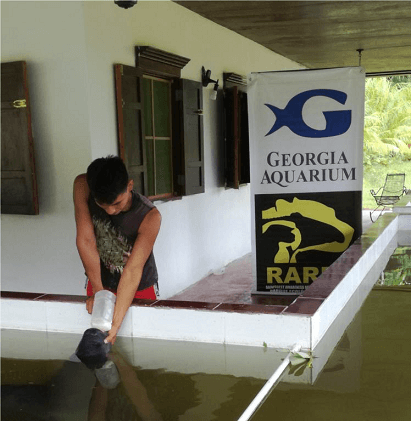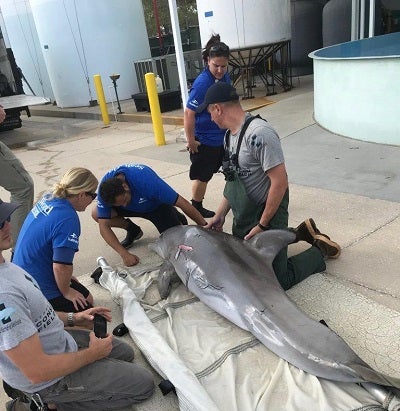1. Hoopes LA. The Elasmobranch Husbandry Manual II: Recent Advances in the Care of Sharks, Rays and their Relatives. Ohio Biological Survey. 135-146. 2017.
2. Bryan CE, Bossart GD, Christopher SJ, Davis WC, Kilpatrick LE, McFee WE, O’Brien TX. Selenium protein identification and profiling by mass spectrometry: A tool to assess progression of cardiomyopathy in a whale model. Journal of Trace Elements in Medicine and Biology. 44: 40-49. 2017.
3. Dove A.D.M., Clauss T.M., Marancik D.P. and Camus A.C. (2017) Some Emerging Diseases of Elasmobranchs in Aquariums. In: (M. Smith ed.) Elasmobranch Husbandry Manual 2nd Ed.
4. Bossart GD, Fair PA, Schaefer AM, Reif JS. Health and Environmental Risk Assessment Project for bottlenose dolphins Tursiops truncatus from the southeastern USA. I. Infectious diseases. Diseases of Aquatic Organisms. 125: 141-153. 2017.
5. Reif JS, Schaefer AM, Bossart GD, Fair PA. Health and Environmental Risk Assessment Project for bottlenose dolphins Tursiops truncatus from the southeastern USA. II. Environmental Aspects. Diseases of Aquatic Organisms. 125:155-166. 2017.
6. McKinney JA, Hoffmayer ER, Holmberg J, Graham RT, Driggers III WB, de la Parra-Venegas R, Galvan-Pastoriza BE, Fox S, Peirce SJ, Dove ADM. Long-term assessment of whale shark population demography and connectivity using photo-identification in the Western Atlantic Ocean. PLOS ONE.https://doi.org/10.1371/journal.pone.0180495. 2017.
7. Morey JS, Burek Huntington KA, Campbell M, Clauss TM, Goertz CE, Hobbs RC, Lunardi D, Moors AJ, Neely MG, Schwacke LH, Van Dolah FM. De Novo transcriptome assembly and RNA-Seq expression analysis in blood from beluga whales of Bristol Bay, AK. Marine Genomics. 35: 77-92. 2017.
8. Hoopes, LA, Koutsos EA, Norton, TM. 2017. Nutrition. In CA Manire, Sea Turtle Health and Rehabilitation (pp. 63-96). Plantation, Fl: J. Ross Publishing.
9. Norman BA, Holmberg JA, Arzoumanian Z, Reynolds SD, Wilson RP, Rob D, Pierce SJ, Gleiss AC, de la Parra R, Galvan B, Rameriz-Macias D, Robinson D, Fox S, Graham R, Rowat D, Potenski M, Levine M, McKinney JA, Hoffmayer E, Dove ADM, et al. Undersea Constellations: The Global Biology of an Endangered Marine Megavertebrate Further Informed through Citizen Science. BioScience. 67: 1029-1043. 2017
10. McDermott Delaune AJ, Field CL, Clauss TM. Whole Blood Transfusions To Treat Severe Anemia In Seven Cownose Rays (Rhinoptera bonansus) And One Short-Tail Stingray (Dasyatis brevicaudata). Journal of Zoo and Wildlife Medicine. 48(4). 1172-1180. 2017.
11. Strobel MM, Houser DS, Moore KT, Davis MR, Clough PL, Staggs LA, Eskelinen HC, Bates RJ, Walsh MT.Auditory Evoked Potentials and Behavioral Considerations with Hearing Loss in Small Cetaceans: Applications as a Standard Diagnostic Test in Health Assessment. Journal of Zoo and Wildlife Medicine. 48(4): 979-986. 2017.
12. Dill J, Sanchez S, McDermott A, Camus A. Disseminated nocardiosis associated with the isolation of Nocardia nova in a longsnout seahorse Hippocampus reidi (Ginsburg). Journal of Fish Disease. 40: 1235–1239. 2017.
13. Zahini M, Dean WL, Ghim S, Joh J, Gray RD, Khanal S, Bossart GD, Mignucci-Giannoni AA, Rouchka EC, Jenson AB, Trent JO, Chaires JB, Chariker JH. Identification of G-quadruplex forming sequences in three manatee papillomaviruses. PLOS ONE.https://doi.org/10.1371/journal.pone.0195625. 2018.
14. Tessler M, Marancik D, Champagne D, Dove A, Camus A, Siddall M, Kvist S. Marine leech anticoagulant diversity and evolution. Journal of Parasitology. In press.
15. Rodrigues TCS, Subramaniam K, Cortes-Hinojosa G, Wellehan, Jr JFX, Ng TFF, Delwart E, McCulloch SD, Goldstein JD, Schaefer AM, Fair PA, Reif JS, Bossart GD, Waltzek TB. Complete Genome Sequencing of a Novel Type of Omikronpapillomavirus 1 in Indian River Lagoon Bottlenose Dolphins (Tursiops truncatus). American Society for Microbiology; Genome Announcements. 6:e00240-18. https://doi.org/10.1128/genomeA.00240-18. 2018


